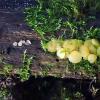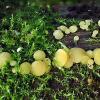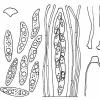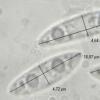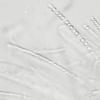
04-11-2025 12:43
 Edvin Johannesen
Edvin Johannesen
Hi! One more found on old Populus tremula log in O

04-11-2025 09:07
Hello.A suspected Hymenoscyphus sprouting on a thi

03-11-2025 21:34
 Edvin Johannesen
Edvin Johannesen
These tiny (0.4-0.5 mm diam.), whitish, short-stip

28-10-2025 15:37
Carl FarmerI'd be grateful for any suggestions for this strik

03-11-2025 16:30
 Hans-Otto Baral
Hans-Otto Baral
Hello I want to ask you if you have found this ye

28-10-2025 19:33
 Nicolas Suberbielle
Nicolas Suberbielle
Bonjour à tous,Je voudrais votre avis sur cette r

31-10-2025 09:19
 Lothar Krieglsteiner
Lothar Krieglsteiner
Can somebody provide me with a file of:Rogerson CT
Hymenoscyphus..., Phaeohelotium ?sur saule
Gilbert MOYNE,
17-10-2019 17:24
Bonjour,
Deuxième récolte de mardi 15/10/2019 qui me pose problème:
Sur branche morte de Salix, Remoray (Doubs), 900 m
Apothécies substipitées, légèrement ombiliquées, grégaires, 1-2 mm de diamètre. Hyménium convexe, fragile, jaune citrin. Surface externe concolore à légèrement plus pâle.
Asques longuement claviformes, 130-185 x 8-12 µm, crochets +, IKI très faiblement + mais pas certain (artefact ?).
Asques longuement claviformes, 130-185 x 8-12 µm, crochets +, IKI très faiblement + mais pas certain (artefact ?).
Paraphyses quasiment filiformes, sans goutte, 2 µm de diamètre, non élargies au sommet.
Spores elliptiques avec de nombreuses gouttes jamais rangées de manière régulière et accompagnées de nombreuses guttules. Certaines spores sont plus étroites vers le centre. Quelques unes présentent une cloison. Hétérosporie importante : 14-21 x 5-6 µm.
Pas trouvé d'espèce correspondant surtout à cause de ces paraphyses très étrites et sans goutte.
Spores elliptiques avec de nombreuses gouttes jamais rangées de manière régulière et accompagnées de nombreuses guttules. Certaines spores sont plus étroites vers le centre. Quelques unes présentent une cloison. Hétérosporie importante : 14-21 x 5-6 µm.
Pas trouvé d'espèce correspondant surtout à cause de ces paraphyses très étrites et sans goutte.
Merci de votre aide.
Gilbert
Gilbert
Hans-Otto Baral,
17-10-2019 17:30

Re : Hymenoscyphus..., Phaeohelotium ?sur saule
Dear Gilbert!
my first idea is Ph. monticola. Does anything not fit? The empty-looking paraphyses exclude Ph. epiphyllum (miltiguttulate), although Ph. monticola has elongate Vbs.
Zotto
my first idea is Ph. monticola. Does anything not fit? The empty-looking paraphyses exclude Ph. epiphyllum (miltiguttulate), although Ph. monticola has elongate Vbs.
Zotto
Gilbert MOYNE,
17-10-2019 17:57
Re : Hymenoscyphus..., Phaeohelotium ?sur saule
Merci Zotto.
C'est vrai que je me suis arrêté longuement sur cette espèce mais les paraphyses m'étonnaient. Je vais regarder de plus près.
Merci encore.
Gilbert
Gilbert
Mirek Gryc,
17-10-2019 19:42
Re : Hymenoscyphus..., Phaeohelotium ?sur saule
Hi Zotto
If the subject is P. monticola, could you explain how this species differs from P. epiphylus?
Can the shape of the fruiting bodies also be an important feature during identification?
Sorry to ask but I still have trouble distinguishing them.
.
Thanks in advance.
Mirek
If the subject is P. monticola, could you explain how this species differs from P. epiphylus?
Can the shape of the fruiting bodies also be an important feature during identification?
Sorry to ask but I still have trouble distinguishing them.
.
Thanks in advance.
Mirek
Hans-Otto Baral,
17-10-2019 20:20

Re : Hymenoscyphus..., Phaeohelotium ?sur saule
Hi Mirek
the colour is more yellow in monticola, more whitish-cream but also cream-yellow in epiphyllus.
The best character in my opinion is the content of the living paraphyses: multiguttulate VBs in epiphyllus, elongate VBs in P. monticola.
Genetically the two are very distant, therefore even the same genus is doubted.
Zotto
the colour is more yellow in monticola, more whitish-cream but also cream-yellow in epiphyllus.
The best character in my opinion is the content of the living paraphyses: multiguttulate VBs in epiphyllus, elongate VBs in P. monticola.
Genetically the two are very distant, therefore even the same genus is doubted.
Zotto
Mirek Gryc,
17-10-2019 21:18
Re : Hymenoscyphus..., Phaeohelotium ?sur saule
I asked about macroscopic features because I find two types of fruiting bodies.
The first are large to several millimeters in diameter and grow on a variety of hardwoods. They are very common with me.
The first are large to several millimeters in diameter and grow on a variety of hardwoods. They are very common with me.
The other ones are very small, up to 1 mm in diameter, and I found them on leaves. The ones I present grew on Betula leaves.
Identical microscopic features?
Mirek
Hans-Otto Baral,
17-10-2019 21:29

Re : Hymenoscyphus..., Phaeohelotium ?sur saule
The colour of the second looks like epiphyllus.
But the yellow colour of the first appears to be also possible in that species, and the VBs tell for that.
For instance, Hymenoscyphus epiphyllus, Eckel-1/2 looks like yours (I had it wrongly in monticola).
Your two samples do not look like very different in apo size, though.
But the yellow colour of the first appears to be also possible in that species, and the VBs tell for that.
For instance, Hymenoscyphus epiphyllus, Eckel-1/2 looks like yours (I had it wrongly in monticola).
Your two samples do not look like very different in apo size, though.
Mirek Gryc,
17-10-2019 21:41
Re : Hymenoscyphus..., Phaeohelotium ?sur saule
I scaled the pictures of the fruiting bodies wrongly!
The others are on a 1: 1 scale
Fruitbodies marked with number 1 grow up to 6 mm.
I marked the number 2 with a maximum size of 1 mm.
The others are on a 1: 1 scale
Fruitbodies marked with number 1 grow up to 6 mm.
I marked the number 2 with a maximum size of 1 mm.
Initially I marked them as Hymenoscyphus epiphyllus but without certainty.
thank you very much!
Mirek

